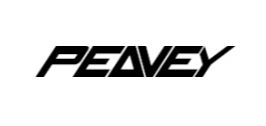Peavey Electronics is one of the very few major American musical instrument manufacturers still run by the original founding member and owner. Hartley Peavey grew up in Meridian, Mississippi and spent some time working in his father's music store repairing record players. He gained some recognition locally for the guitar amplifiers he built by hand while he was still in school, and decided months prior to college graduation to go into business for himself. In 1965 Peavey Electronics was started out of the basement of Peavey's parents' home. Due to the saturated guitar amp market of the late 1960s, Peavey switched to building P.A. systems and components. By 1968 the product demand was great enough to warrant building a small cement block factory on rented land and hire another staff member.
The demand for Peavey products continued to grow, and by the early 1970s the company´s roster had expanded to 150 employees. Emphasis was still placed on P.A. construction, although both guitar and bass amps were doing well. The Peavey company continued to diversify and produce all the components needed to build the finished product. After twelve years of manufacturing, the first series of Peavey guitars was begun in 1977, and introduced at the 1978 NAMM show. An advertising circular used by Peavey in the late ´70s compared the price of an American built T-60 (plus case) for $350 versus the Fender Stratocaster´s list price of $790 or a Gibson Les Paul for $998.50 (list). In light of those list prices, it´s also easy to see where the Japanese guitar makers had plenty of maneuvering room during their copy era.
The T-Series guitars were introduced in 1978, and the line expanded from three models up to a total of seven in five years. In 1983, the product line changed, and introduced both the mildly wacky Mystic and Razer original designs (the Mantis was added in 1984) and the more conservative Patriot, Horizon, and Milestone guitars. The Fury and Foundation basses were also added at this time. After five years of stop tailpieces, the first Peavey Octave Plus vibratos were offered (later superseded by the Power bend model). Pickup designs also shifted from the humbuckers to single or double blade pickups.
Models that debuted in 1985 included the vaguely stratish Predator, and the first doubleneck (!), the Hydra. In response to the guitar industry shifting to superstrat models, the Impact was introduced in 1986. Guitars also had the option of a Kahler locking tremolo, and two offsprings of the ´84 Mantis were released: The Vortex I or Vortex II. The Nitro series of guitars were available in 1987, as well as the Falcon, Unity, and Dyna-Bass. Finally, to answer companies like Kramer or Charvel, the Tracer series and the Vandenberg model(s) debuted in 1988.
As the U.S. guitar market grew more conservative, models like the Generation S-1 and Destiny guitars showed up in guitar shops. Peavey basses continued to evolve into sleeker and more solid instruments like the Palaedium, TL series or B Ninety. 1994 saw the release of the MIDIBASE (later the Cyberbass) that combined magnetic pickups with a MIDI-controller section.
One of Peavey's biggest breakthroughs in recent years was the development of the Peavey EVH amplifier, developed in conjunction with Edward Van Halen. Due to the success and acceptance of the EVH 5150 amplifier, Van Halen withdrew his connection with his signature Ernie Ball model and designed a new Wolfgang model with Peavey that was introduced in 1996. The EVH Wolfgang guitars were produced through 2004, when the Peavey/Van Halen endorsement ended. However, the overall design of the guitar lived on with the introduction of the Hartley Peavey Signature Series.
In 2007, Peavey introduced the new USA Peavey Custom Shop that operates through its own website. Browsers/customers can view options, customize, and order guitars through the site. For more information, visit Peavey's website or Peavey's Custom Shop website.
Model History, nomenclature, and description courtesy Grant Brown, Peavey Repair section.
Instruments currently built in Meridian, MS, Leaksville, MS, and overseas since 1965. Distributed by Peavey Electronics Corporation in Meridian, MS.



















































